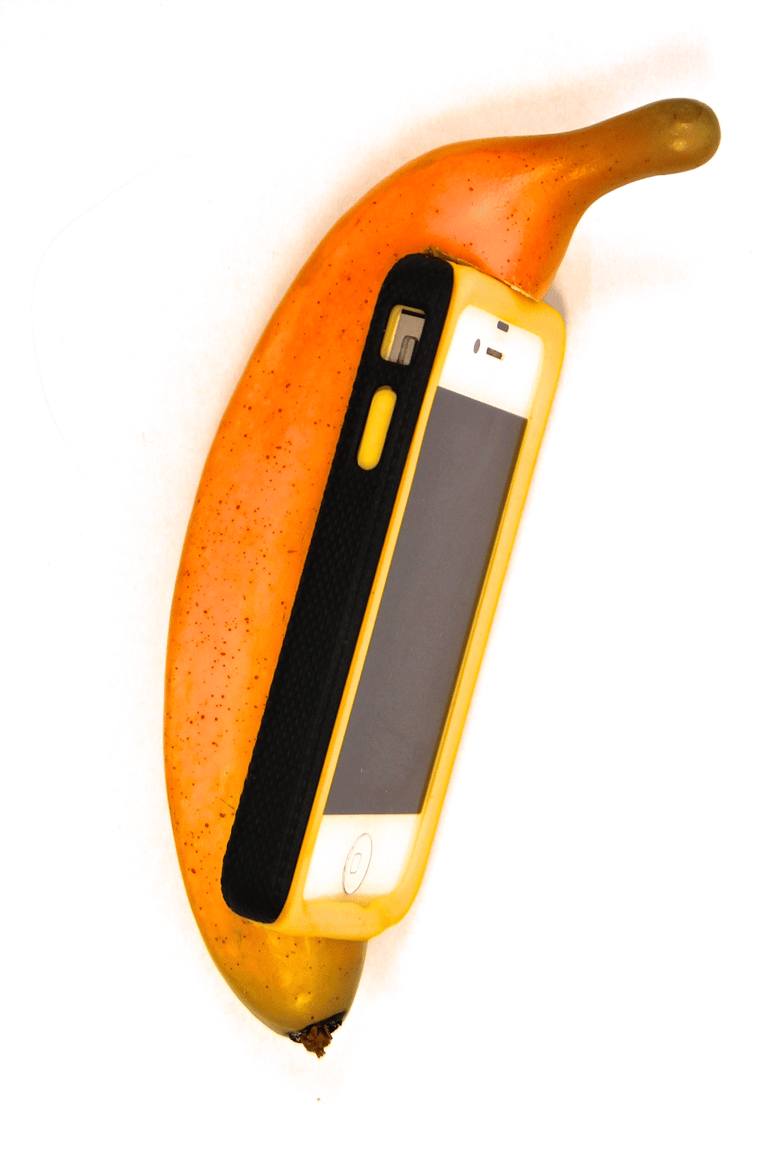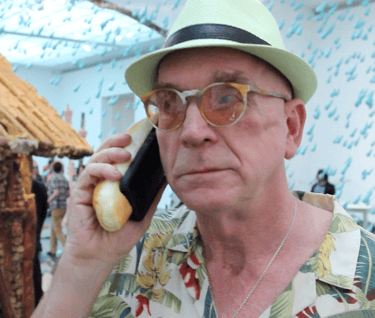Figuring It Out with Morrisa Maltz
1/16/2014


Bananafone
The first iPhone was launched in 2007. Accessories for the device soon followed: from flashy and tacky, to the protective and minimal. In response to the plethora of iPhone accoutrement, Los Angeles-based filmmaker and artist Morrisa Maltz founded Mofone (the most outrageous and hilarious iPhone cases) contributing Maltz’s voice to the conversation between functionality and art.
When it comes to her artistic endeavors, Morrisa Maltz likes to have fun. When she’s not constructing cinematic worlds of macabre for her enigmatic female characters, Maltz spends her time on the phone… sort of.
What began as a fun and whimsical side project of iPhone accessories ultimately grew to be something much bigger than just iPhone cases; Mofones evolved into Mofone Emotional Moment: a performance in conjunction with the likes of Urs Fischer at the MOCA and at The Museum of Contemporary Art Santa Barbara.
Morrisa Maltz continues her conversation with musician/songwriter Carrick Moore Gerety and speaks openly on the future of Mofones.


Mofone Emotional Moment at the opening of URS FISCHER at the MOCA
On Mofones
CMG: All right, so I think we know about your future project, Odyssea. Is there anything else coming up that you know you’re going to do — or not? Are you still figuring it out?
MM: I’m figuring it out. I’m trying to continue the Mofone project.
CMG: Okay, let’s hear about Mofones. Can you sum it up for me? What is the Mofone project?
MM: Well, Mofone is a company for iPhone cases that I started. They are ridiculous objects attached to your phone like dinosaur bones, shells, and crazy things you wouldn’t imagine. They are sold at Urban Outfitters and are now at MOCA. I’ve also done numerous performances.
It’s my way of trying to blend art and commerce in some way. Do you want me to describe the performances?
CMG: Yes, sure. But first I want to hear about that time someone came up to you and said something really mean at one of your performances.
MM: Oh, at the MOCA? Yeah, I did this performance at MOCA called Mofone Emotional Moment where I like happily went up to people with this crazy weird phone and asked them to call someone that they loved and tell them how they feel. I did it as a loving and happy performance to get people to say “I love you,” to people they hadn’t talked to in a while, or to just share their feelings.
Anyway, some guy was like, “Wait, so this is for you to sell your phones? Like you’re doing a performance at MOCA to support a company?” My response was that it wasn’t really for a company. “It’s only an iPhone case. It’s only a performance.” I thought… I was very — this was in my head. So I said to him, “Oh yeah just call somebody you love! It’s a performance.” And he was like, “This is your art?” And I was like, “yeah!” I told him that it was fine if he didn’t want to call anyone, but he was basically expressing that he felt an artist shouldn’t be doing something commercial… or trying to sell something.
CMG: But you’re maybe trying to push the envelope?
MM: I mean at the end of the day…Mofones are meant to be happy objects. They are hilarious and make people laugh. The whole idea stemmed out of being performative in your everday life… Using this thing that would kind of change your life as you’re walking down the street.
CMG: Because people always comment on it…Before Mofones, you’d have a purse and coming out of the purse would be a coiled old-school phone with your cellphone glued to it and feather coming off of it. And total strangers would be like, “Hey, what the heck is that? Who is this crazy girl?”
MM: Yeah, it was a fun way to like make life fun. Your phone is like a really integral part of what you do. You can be on it all the time. And if you tend to have like a ridiculous object as your phone… your life is slightly different. So yeah, the whole idea with Mofones was making everyday performance piece. Then a bunch of different performances have come out of this project. There was the one at MOCA [Los Angeles] and then we did it at the Museum of Contemporary Art in Santa Barbara… we built a Mofone telephone booth which is just a wacky telephone booth. We asked people to step into it and call a message hotline and leave messages for somebody they couldn’t share feelings with, including a dead person or a pet.
Or they could call somebody they loved and tell them how they feel. So I’m continuing to push that project. Basically, I would love to like monopolize the phone situation.
CMG: Phones and art. I actually went to a performance where you’re sharing the audio that people were leaving when they called this message hotline.
MM: In personal relationships, a lot of times communicating my emotions is really really difficult, number one. And number two, I know that I would love an avenue to communicate with my dead family members to just — I think a lot about if I could call this person and say “this thing” to them, what would I say? I think there is something really magical about the phone even though we’re so familiar with it, there’s this object that you just pick up and it calls someone somewhere…
CMG: And art is about communication so that makes sense. My favorite result of the Mofone project is the little commercial you made. Can you describe one?
MM: So part of the whole fun of Mofone being a performance thing was that I wanted to make a bunch of videos. It was a fun idea to have a product that I could make fake commercials for.
CMG: Cool, well should we adjourn this conversation and eat some ice cream?
MM: Oh, yeah do you have ice cream?
CMG: I have ice cream.
MM: Yeah, that sounds great.
CMG: All right, cool.
MM: Thanks, this was fun.
CMG: Thank you.
